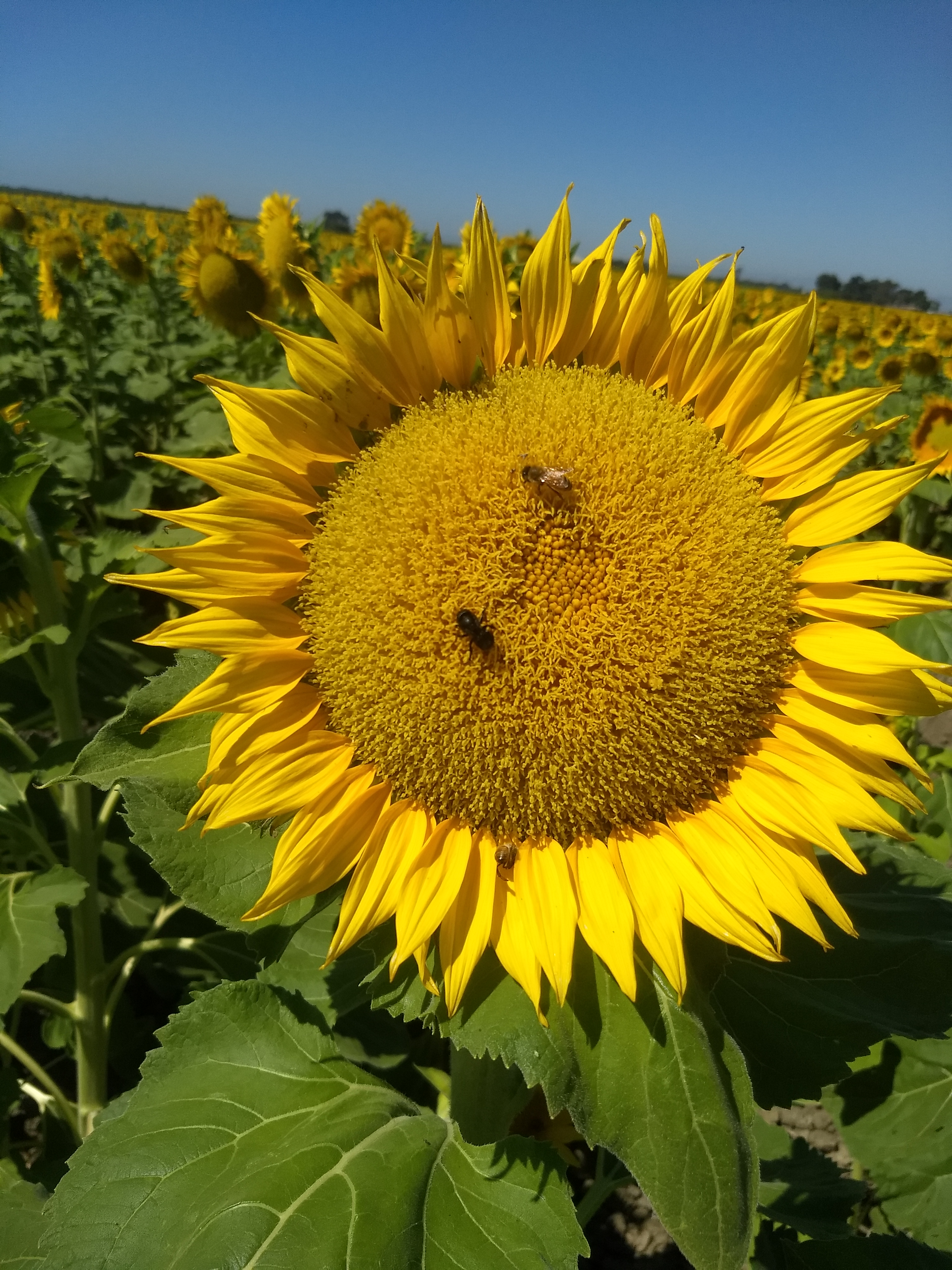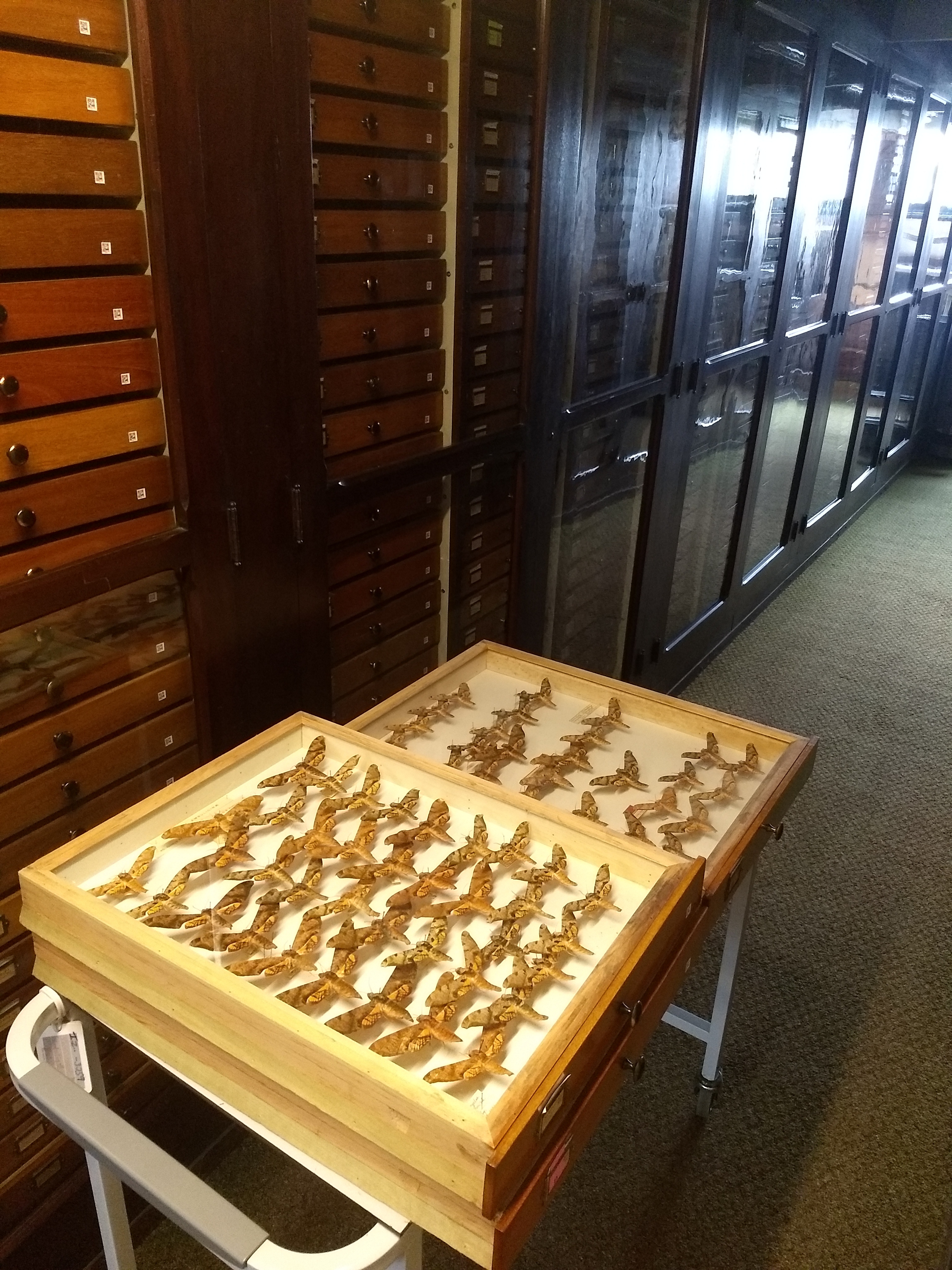Research
Interactions between species underlie many essential ecosystem services, and the outcomes of these interactions depend on the traits and behaviors of the partners. Intraspecific variation, especially variation in behavior, can dramatically alter how these partners interact. My research examines how behavioral and morphological variation within species – especially differences between males and females – affect the outcomes of ecological interactions between species. At present, I am using plant-pollinator interactions as a model system, as relatively small differences in the behavior of nectar and pollen foragers can have large consequences for the plants they visit. Within this larger conceptual theme, my current research integrates diverse approaches to answer the following key questions:
What are the causes and consequences of intraspecific variation?
 In my dissertation, I integrated field observations, behavioral assays, and physiological experiments to investigate the patterns, causes, and consequences of within-species variation in the pollination behavior of hawkmoths. Hawkmoths (Lepidoptera: Sphingidae) are important, but poorly studied, pollinators of night-blooming plants worldwide, with many endangered or threatened species relying heavily on pollination by this group.
I found that male and female moths of several species differ substantially in the pollen they carry, and therefore likely their foraging behavior. Subsequent experiments suggested that the pollen loads likely differ because males spend more time flying and looking for mates, while females spend more time foraging and are constrained by offspring requirements. In a review across pollinator taxa, I argue that such differences are widespread and likely driven by underlying reproductive strategy differences. These differences have the potential to have large consequences for plants, but direct evidence of these consequences remains limited. Examining these and other intraspecific differences at the mechanistic scale continues as a large part of my work.
In my dissertation, I integrated field observations, behavioral assays, and physiological experiments to investigate the patterns, causes, and consequences of within-species variation in the pollination behavior of hawkmoths. Hawkmoths (Lepidoptera: Sphingidae) are important, but poorly studied, pollinators of night-blooming plants worldwide, with many endangered or threatened species relying heavily on pollination by this group.
I found that male and female moths of several species differ substantially in the pollen they carry, and therefore likely their foraging behavior. Subsequent experiments suggested that the pollen loads likely differ because males spend more time flying and looking for mates, while females spend more time foraging and are constrained by offspring requirements. In a review across pollinator taxa, I argue that such differences are widespread and likely driven by underlying reproductive strategy differences. These differences have the potential to have large consequences for plants, but direct evidence of these consequences remains limited. Examining these and other intraspecific differences at the mechanistic scale continues as a large part of my work.
During my first post-doc and continuing to the present, I also expanded this work from the individual scale to whole plant-pollinator communities using quantitative network analysis. By comparing observed plant-pollinator networks to simulated null networks, I found that males and females differed in the identity and diversity of flowers they visited, and that these differences were prevalent enough to affect the overall architecture of the networks. Future studies will examine the ecological contexts in which pollinator species are likely to differ more or less between the sexes.
How is behavior shaping the responses of individuals to anthropogenic threats?
 In addition to examining pollinator network roles, during my first post-doc I worked with a large team examining the effect of floral resource diversity on native pollinators and pathogens in sunflower fields. The pathogens infecting managed pollinators like honeybees are becoming increasingly concerning to farmers and beekeepers; this project aimed to study the microbial threats to wild bees in this system, and how it has been impacted by monoculture farming. We found that sunflower monoculture amplifies local parasite abundance and diversity, but that diverse managed hedgerows can dampen this effect. I also found that while flowers can serve as transmission hubs for pollinator pathogens, the majority of the bees’ microbiomes are likely acquired away from flowers. Thus, the combination of local resource availability and individual decisions affect the interactions of these bees with both plants and pathogens.
In addition to examining pollinator network roles, during my first post-doc I worked with a large team examining the effect of floral resource diversity on native pollinators and pathogens in sunflower fields. The pathogens infecting managed pollinators like honeybees are becoming increasingly concerning to farmers and beekeepers; this project aimed to study the microbial threats to wild bees in this system, and how it has been impacted by monoculture farming. We found that sunflower monoculture amplifies local parasite abundance and diversity, but that diverse managed hedgerows can dampen this effect. I also found that while flowers can serve as transmission hubs for pollinator pathogens, the majority of the bees’ microbiomes are likely acquired away from flowers. Thus, the combination of local resource availability and individual decisions affect the interactions of these bees with both plants and pathogens.
 During my second post-doc as an NSF PRFB fellow hosted by Cornell, I am examined how the floral foraging behavior of hawkmoths has changed over time using preserved specimens in museum collections. Hawkmoths are charismatic and frequently collected by both scientists and hobbyists, making specimens readily available in many museums. By forensically examining the pollen these specimens still carry, I am documenting transient species interactions from 50-100 years ago, focusing in particular on hawkmoth-plant interactions in the Caribbean. I found that moths across species and islands show remarkably similar patterns of pollen load diversity, with high specialization but little overlap in pollen identity even among individuals within moth species. This results in networks that are markedly more specialized and less nested than expected by chance and suggests that moths forage opportunistically such that each highly dispersive individual visits a small subset of the flowers it encounters. Concerningly, I also found that pollen diversity in Jamaica was lower in the 2020s than in earlier decades, with more moths carrying no pollen at all. During this project student mentees and I also studied the pollen dynamics that generate the pollen loads we find on preserved (and live) specimens, finding that tongue curling in hawkmoths causes substantial pollen loss and that plants vary enormously in the amount of pollen they place on visitors.
During my second post-doc as an NSF PRFB fellow hosted by Cornell, I am examined how the floral foraging behavior of hawkmoths has changed over time using preserved specimens in museum collections. Hawkmoths are charismatic and frequently collected by both scientists and hobbyists, making specimens readily available in many museums. By forensically examining the pollen these specimens still carry, I am documenting transient species interactions from 50-100 years ago, focusing in particular on hawkmoth-plant interactions in the Caribbean. I found that moths across species and islands show remarkably similar patterns of pollen load diversity, with high specialization but little overlap in pollen identity even among individuals within moth species. This results in networks that are markedly more specialized and less nested than expected by chance and suggests that moths forage opportunistically such that each highly dispersive individual visits a small subset of the flowers it encounters. Concerningly, I also found that pollen diversity in Jamaica was lower in the 2020s than in earlier decades, with more moths carrying no pollen at all. During this project student mentees and I also studied the pollen dynamics that generate the pollen loads we find on preserved (and live) specimens, finding that tongue curling in hawkmoths causes substantial pollen loss and that plants vary enormously in the amount of pollen they place on visitors.